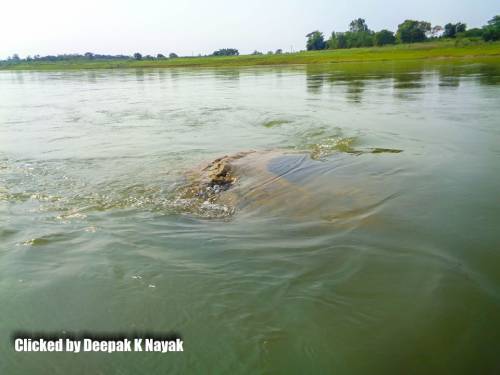
500-year-old Gopinath temple has emerged again from the waters of Mahanadi after 11 years in Nayagarh district of Bhubaneswar, the capital of Odisha. A large number of people are reaching near Padmavati village for darshan of the temple. The ancient submerged temple was discovered in the Mahanadi upstream from Cuttack.
INTACH documented the remains
There is an ongoing project by the name Mahanadi Valley Heritage Site Documentation Project by INTACH under which the remains of this temple were spotted and documented. Deepak Kumar Nayak, who is the project assistant, visited the site with the help Ravindra Kumar Rana who is a history enthusiast. Gopinath Temple was dedicated to Lord Krishna.
Deepak shared the entire store in an elaborate post on Facebook. He explained how Padmavati village was a part of Satpatna, and there was an alliance of seven villages at that time. In the 19th century, there was a drastic change in the river level and people had to move to a higher place. The villagers took the deities of the temple with them.
https://www.facebook.com/permalink.php?story_fbid=10158265185786168&id=776946167
At one time there were 22 temples at this place and all of them submerged into the river after water levels rose. When the water level is low, you can see the front of the Gopinath temples as it was one of the biggest temples of that time.
Around three months ago, Ravindra Rana called Nayak and told him about the temple. Nayak was aware of some water-immersed temple in Sambalpur, but he never knew about the submerged temple in the lower-central region of Mahanadi valley. He added this temple to his ongoing campaign to document heritage sites of the area.
Nayak, along with his senior Anil Dheer, made a plan to visit the site, but due to lockdown, they had to postpone it. Once the lockdown was lifted, they visited the site three times, but every time temple was submerged in the water. Then later on 7th June, Rana called them that the upper part of the temple ‘Mastaka’ has started to appear again. Nayak rushed to the site the next morning. It took him a 10-minute boat ride to reach the temple.
Nayak documented the remains and took many photographs as proof. He had to step back because of the high velocity of flowing water, making it next to impossible for him to continue. The present-day Gopinath temple in Padmavati village has the original statue from the submerged temple. Nayak mentioned in his post that after analyzing the stones used to build the temple, he could verify that those were the similar stones used to build temples in the 15th and 16th centuries.
History should be preserved
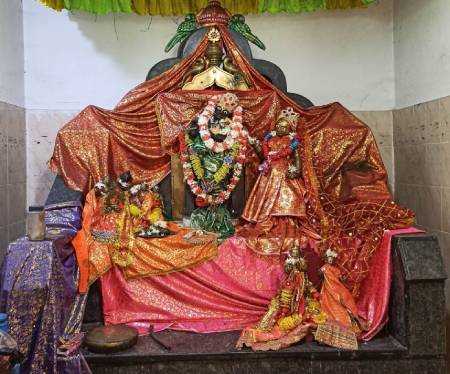
Along with Gopinath Temple’s idol, the villagers shifted many idols from temples of Narsingh, Ras Bihari, Kamna Devi and Dadhibhaman. They worship them in nearby Tikaripada village and Padmavati village. Project head Anil Dhir said that there are many temples submerged in water in Odisha, which includes 65 temples in the Hirakud reservoir. He added that Gopinath Temple should become a model for restoration projects and should be the first one to be transferred to the ground.
Gopinath Temple in Padmavati village
Experts say that the temple dates back to 15th or 16th century because of the construction and design of the ‘Mastaka’ and the material used for the same. Lord Gopinath is a form of Lord Vishnu. In mid-19th century, the deities were removed and installed at a higher place which was safer. The Gopinath Dev temple in Padmavati village is where the deities are installed. The last time the ‘Mastaka’ was seen was about 11 years back.

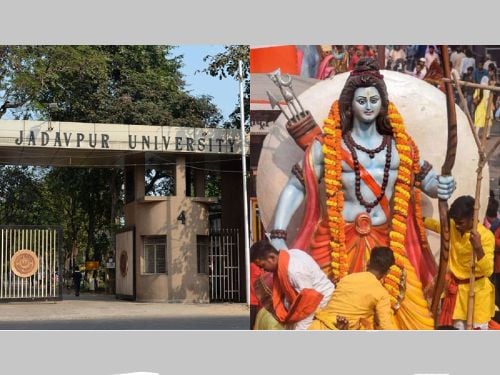 Jadavpur Univ revokes permission to celebrate Ram Navami on campus after granting it
Jadavpur Univ revokes permission to celebrate Ram Navami on campus after granting it Andhra Pradesh: Farooq kills mentally challenged Hindu man for insurance money
Andhra Pradesh: Farooq kills mentally challenged Hindu man for insurance money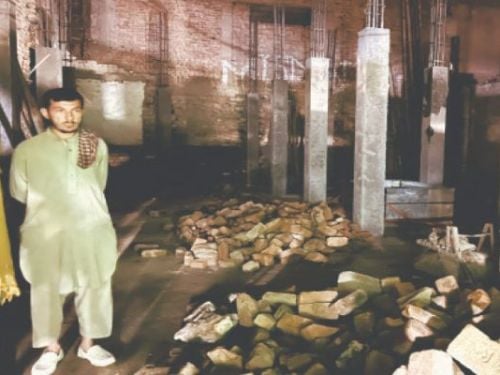 Pakistan: Ancient Hindu temple in Khyber Pakhtunkhwa demolished for commercial complex
Pakistan: Ancient Hindu temple in Khyber Pakhtunkhwa demolished for commercial complex Bihar: Goddess Bhagavati Temple in Araria vandalised and deities damaged
Bihar: Goddess Bhagavati Temple in Araria vandalised and deities damaged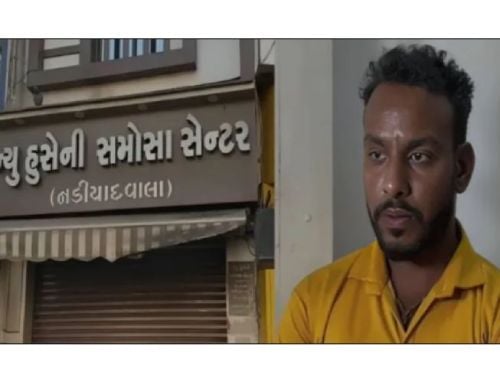 Vadodara: Beef supplier Imran Qureshi arrested in beef-stuffed samosa case
Vadodara: Beef supplier Imran Qureshi arrested in beef-stuffed samosa case After Idukki diocese, Syro Malabar Catholic Church’s Thamarassery diocese screens ‘The Kerala Story’
After Idukki diocese, Syro Malabar Catholic Church’s Thamarassery diocese screens ‘The Kerala Story’